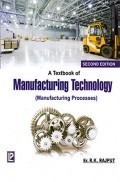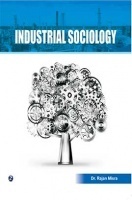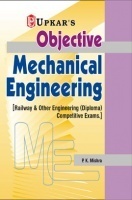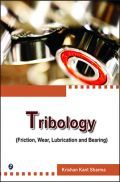Contemporary fastidious companies are required to eliminate wastes and offer value-added products and services to the customers, which requirement is fulfilled by adopting the paradigm called lean manufacturing. On the other side, futuristic companies surge towards reaching the twenty-first century mission by reacting quickly in accordance with the dynamic demands of the modern customers, for which researchers have been developing a paradigm called agile manufacturing. Although various techniques and tools are applied, cohesive procedures are yet to be evolved to implement these paradigms systematically and successfully in companies. In this context, this book is evolved to address students, academics, practitioners and researchers for gaining theoretical, practical and research futuristic knowledge on lean and agile manufacturing paradigms.
Organised in 18 chapters, the text opens with a historical overview of lean and agile manufacturing paradigms. It then discusses the lean manufacturing principles with their application procedures. The book comprehensively analyses the methods of implementation of lean manufacturing paradigm in both traditional and moderate organisations. It also gives an equal treatment to the implementation of agile manufacturing paradigm under four drivers such as management driver, technology driver, manufacturing strategy driver and competition driver through the adoption of appropriate agile manufacturing criteria. The book concludes with a discussion of lean and agile manufacturing paradigms from the perspectives of academia, researchers and practitioners.
The text is well supported by a large number of self-test questions with their answers. A unique feature of the book is the inclusion of research avenues at the end of each chapter, which enable the readers to carry out researches on these paradigms.
This book is intended for the undergraduate and postgraduate students of industrial, manufacturing, production and mechanical engineering.
Preface.
Acknowledgements.
List of Abbreviations and Expansions.
1. Introduction.
2. Lean Manufacturing through Waste Elimination.
3. Value Stream Mapping.
4. 5S Concepts.
5. Kaizen in Lean Manufacturing Paradigm.
6. Single Minute Exchange of Die.
7. Pull Production through Kanban Card System.
8. One-Piece Flow Production System.
9. Visual Management.
10. Lean Manufacturing through Total Productive Maintenance.
11. Implementation of Lean Manufacturing Paradigm in Traditional and Moderate Organisations.
12. The Fundamental Structure of Agile Manufacturing Paradigm.
13. Agile Manufacturing through Management Driver.
14. Agility through Technology Driver.
15. Agility through Manufacturing Strategy Driver.
16. Agility through Competitive Driver.
17. Implementation of Agile Manufacturing Paradigm in Moderate and Smart Organisations.
18. Conclusion.
Appendix.
Further Reading.
Index.


















